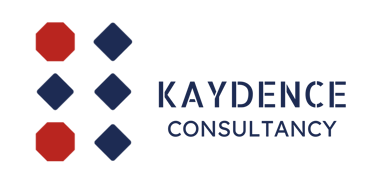Kaydence partners with the CSH to drive innovative solutions in education and healthcare.
SEO in 2025: Mastering the Search Game
Search Engine Optimization (SEO) continues to be a critical factor in driving organic traffic and improving visibility online. As search engines evolve, so do the strategies required to stay ahead in the rankings.
MARKETING
1/4/20253 min read


Search Engine Optimization (SEO) continues to be a critical factor in driving organic traffic and improving visibility online. As search engines evolve, so do the strategies required to stay ahead in the rankings. Here’s a detailed guide to SEO in 2025, highlighting the latest trends, tools, and techniques.
1. The Changing SEO Landscape
Search engines are smarter than ever, and user expectations are higher. SEO in 2025 is about understanding intent, creating valuable content, and leveraging advanced technology to meet user needs.
1.1 Voice Search Optimization
With smart devices and virtual assistants becoming ubiquitous, voice search continues to grow.
Tips:
Focus on long-tail keywords and conversational phrases.
Optimize for “near me” searches to target local audiences.
Create FAQ pages with natural language questions and answers.
1.2 AI and Machine Learning in Search
Google’s AI, such as BERT and MUM, prioritizes content that matches search intent.
Tips:
Use AI tools like Clearscope or SurferSEO to optimize content for semantic search.
Focus on topic clusters to address user queries comprehensively.
Analyze search intent for each keyword to align content appropriately.
2. Content Optimization
Content remains king, but only if it’s relevant, engaging, and optimized for search engines.
2.1 E-A-T Principles
Expertise, Authoritativeness, and Trustworthiness (E-A-T) are critical for ranking in competitive niches.
Tips:
Publish content by credible authors with demonstrated expertise.
Back claims with data, studies, or authoritative sources.
Secure backlinks from high-authority domains.
2.2 Video SEO
Video content dominates in 2025, and optimizing for video search is crucial.
Tips:
Add relevant keywords to video titles, descriptions, and tags.
Use captions and transcripts to improve accessibility and rankings.
Host videos on platforms like YouTube and embed them on your website.
2.3 Visual Search Optimization
With advancements in image recognition, visual search is a growing trend.
Tips:
Optimize image alt text and file names with descriptive keywords.
Use high-quality, original images.
Ensure images are compressed to improve page loading speed.
3. Technical SEO
A solid technical foundation ensures that your site is crawlable, fast, and user-friendly.
3.1 Core Web Vitals
Google’s Core Web Vitals are a critical ranking factor.
Tips:
Improve page load times by compressing images and using a content delivery network (CDN).
Minimize layout shifts to enhance visual stability.
Optimize server response times to reduce delays.
3.2 Mobile-First Indexing
With most searches happening on mobile devices, a mobile-friendly site is non-negotiable.
Tips:
Use responsive design to ensure your site adapts to all screen sizes.
Prioritize fast loading times on mobile.
Simplify navigation for a seamless user experience.
3.3 Structured Data and Rich Snippets
Structured data helps search engines understand your content better and can boost visibility.
Tips:
Use schema markup to enhance search results with rich snippets.
Add structured data for reviews, FAQs, and events.
Test your structured data using Google’s Rich Results Test tool.
4. Local SEO
Local SEO is essential for businesses targeting nearby customers.
4.1 Google Business Profile Optimization
Your Google Business Profile (GBP) is a vital tool for local visibility.
Tips:
Keep your GBP updated with accurate information.
Encourage customers to leave reviews.
Post updates and offers regularly on your GBP.
4.2 Hyper-Localized Keywords
Focus on keywords that include specific locations.
Tips:
Use tools like Moz Local to identify relevant local keywords.
Include local landmarks and neighborhoods in your content.
Optimize for “near me” searches by adding geo-specific metadata.
5. Emerging Trends in SEO
5.1 AI-Powered Tools
AI-driven tools are revolutionizing SEO by providing actionable insights.
Tips:
Use tools like Ahrefs, SEMrush, and Rank Math for advanced keyword analysis.
Leverage AI to generate content outlines and optimize readability.
5.2 Zero-Click Searches
Search engines increasingly display answers directly on the results page.
Tips:
Target featured snippets by answering questions succinctly.
Use schema markup to qualify for rich snippets.
Build authority to ensure your site is trusted for direct answers.
5.3 Sustainability in SEO
Sustainability has become a consumer priority, impacting search behavior.
Tips:
Highlight eco-friendly initiatives on your site.
Optimize for keywords related to sustainability in your industry.
Create content that aligns with green practices.
6. Measuring SEO Success
Tracking performance is key to improving your SEO strategy.
6.1 Key Metrics to Monitor
Organic Traffic: Measure the number of visitors arriving through search engines.
Bounce Rate: Ensure visitors engage with your content.
Keyword Rankings: Track the performance of targeted keywords.
Backlink Profile: Monitor the quantity and quality of backlinks.
6.2 Tools for Analytics
Use Google Analytics 4 for detailed insights into user behavior.
Employ tools like Screaming Frog to audit technical SEO.
Analyze heatmaps with tools like Hotjar to optimize user experience.
Final Thoughts
SEO in 2025 is an intricate mix of technical expertise, content excellence, and strategic thinking. By embracing the latest trends and leveraging advanced tools, businesses can maintain a competitive edge. Remember, the key to successful SEO lies in providing real value to users while keeping up with search engine advancements. Start optimizing today to thrive tomorrow!
Kaydence Consultancy
Global platform for study abroad solutions, marketing strategy and your efficient research partner
Contact
Get in touch
director@kaydenceconsultancy.com
+9188916082
© 2025 Kaydence Consultancy. All rights reserved.
Designed with care | Powered by Innovation
Navigation
Company
Career
Legal
M G Road, Kochi, Kerala, India
